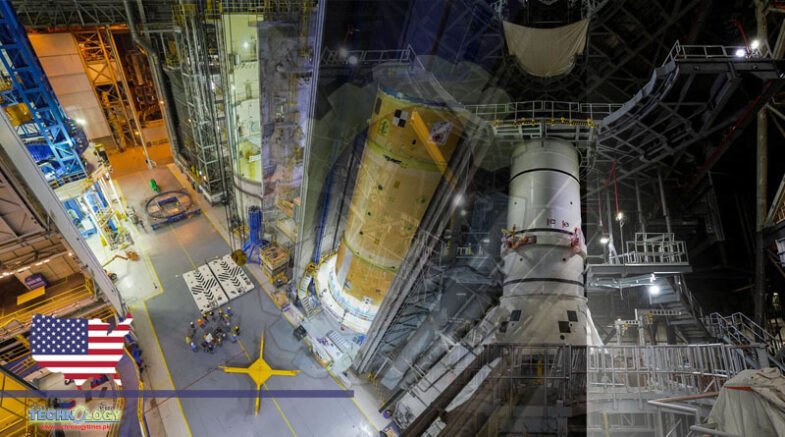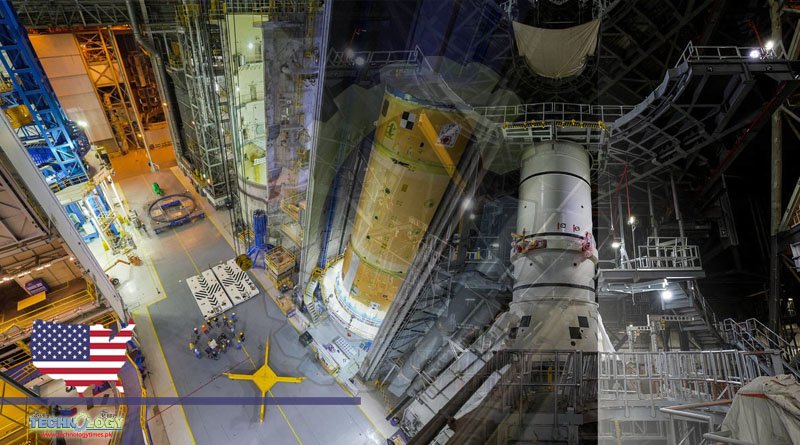NASA’s Katherine Johnson Independent Verification & Validation Facility in Fairmont is supporting three big space missions set to happen this fall, from the continuation of the Artemis project to a 12-year mission to the orbit of Jupiter.

The IV&V Facility plays a critical role, running thousands of tests on software developed at other locations to make sure everything goes smoothly once the Big Space Missions themselves launch.
NASA IV&V Facility office lead Wes Deadrick said that perhaps the biggest of the current missions is the continuing Artemis project, which has the end goal of putting humans back on the moon and, eventually, Mars.
In fact, Deadrick said that later this year, the first launch of the Artemis project is supposed to happen, although the first one is simply a test Big Space Missions.
“It’s an exciting time for Artemis I, because we actually have a launch planned for Nov. 22,” Deadrick said. “It’ll be an un-crewed test flight for the program. … The Orion spacecraft is going to embark on a 25-day mission, and six of those will be in retrograde orbit around the moon. It’ll be very exciting to see the spacecraft that will eventually carry humans on Artemis II make its trip out to the moon.”
Deadrick said the IV&V Facility has made huge steps in helping to certify the spacecraft and vehicles that will be used to get humans back on other celestial bodies, noting that the facility has been working on the project for almost 10 years.
“Leading up to Artemis I, our IV&V teams have played a critical role in helping the Artemis program get to this point,” Deadrick said. “We’ve been supporting the systems that are going to be essential for Artemis I for nearly a decade, back before it was even (known as) Artemis. … In prep for Artemis I, we’re actively pulling together our materials for the launch preparation reviews, and we’ll start communicating the results of our independent analysis on each of the system components, as well as an overarching integrated assessment leading up to launch. …
“In doing so, this gives our program an opportunity to serve a key role in the agency by providing an independent confirmation that the software we evaluated is ready and capable of enabling mission success for those launches.”
However, the Artemis Big Space Missions are only the third launch on which Deadrick and his team have worked this fall. In September, Landsat 9 — the most recent in a line of collaborations between NASA and the U.S. Geological Survey — will launch, continuing a decades-long global observation of the Earth’s natural resources.
“It’ll extend the Landsat program’s history of Earth observation to nearly half a century,” Deadrick said. “Currently, the plan is for Landsat 9 to move into the orbit of Landsat 7, which has sufficient fuel to operate through this year and will subsequently be decommissioned. Landsat will image our Earth every 16 days, and it has an eight-day offset with Landsat 8, which is still in operation. Landsat 9 will collect 750 seams per day of the Earth.”
While Landsat 9 itself will have plenty of software on board, Deadrick said the IV&V Facility, which has been working on the project since 2017, has been primarily focused on the spacecraft that will get the satellite into orbit rather than the scientific instruments themselves.
Finally, Deadrick spoke about a launch about which he’s particularly excited: Lucy. Set for an October liftoff, the Lucy mission will be a 12-year odyssey that will study components of various asteroids in the solar system.
“Lucy will be visiting what we call a ‘main belt asteroid,’ and then it’s going to go all the way out to Jupiter to visit six Trojan asteroids that share Jupiter’s orbit around the sun,” Deadrick said. “All of the target encounters will actually be fly-bys and not actual, physical encounters. … An underlying reason for visiting these bodies is the thought that they could hold some clues to deciphering the history of our solar system and perhaps give us some insight into the origins of our organic matter here on Earth. …
“There’s no other space mission in our history that has been launched to as many different destinations in independent orbits around our Sun as the Lucy mission, so from an astrophysics and an aerospace perspective, it’s incredibly unique on that front.”
Deadrick said the IV&V Facility has been supporting the Lucy mission since 2018, and he explained that because of the facility’s work, hundreds and hundreds of issues with the probe have been found and fixed in the past three years.
“Our efforts have been focused on independently evaluating the most critical aspects of the flight instruments and the ground software with the goal of enabling the achievement of the mission objectives,” Deadrick said. “Our team has found just shy of 1,000 software defects over the course of our support to the project. More importantly, we work closely with the developers to identify and resolve those defects in line with the software development efforts. That’s something that we strive to do, because working hand-in-hand with the developers to fix those issues in line allows us to be most effective.”
With three Big Space Missions in as many months coming up, Deadrick said it’s an exciting time for the NASA IV&V Facility, stressing how lucky he is to be able to be a part of the missions without even having to leave his home state.
“It makes me very proud as a West Virginian and a NASA employee to be able to support these missions and do so from my home state, and I know many of the others in our program feel the same way,” Deadrick said. “Working for NASA is probably unlike working for anyone else. We’re working to develop science and missions that are going to increase our understanding of the planet, allow us to be better students of the environment and help us learn and inspire. It’s a pretty amazing place to work, and these are very exciting and intriguing missions to work on.”
Source WV News
